Find the Best Sump Pump Repair Services in UK
Expert Sump Pump Service
Having problems with your sump pump? HVACCompaniesHub.com connects you with qualified and experienced sump pump repair technicians in UK. We'll help you find the right professional to diagnose and fix the issue quickly and efficiently.
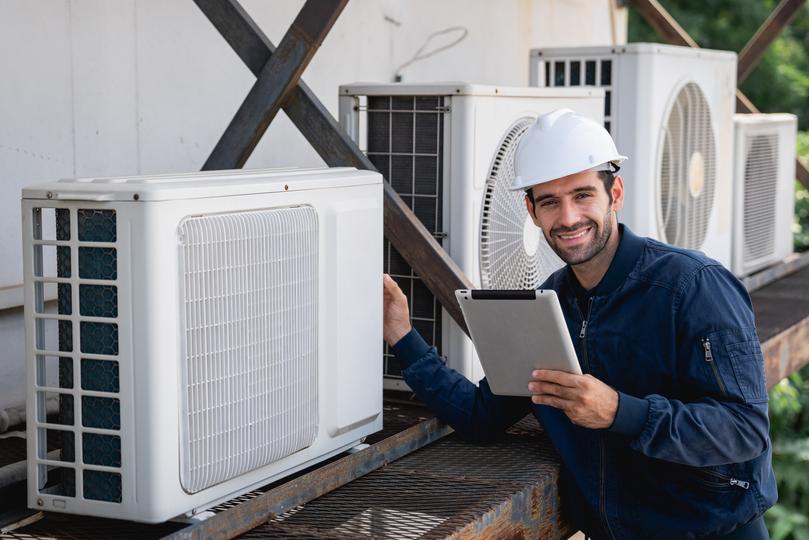
Sump Pump Repair Services Near Me
Looking for reliable sump pump repair in another area? Browse our directory to find trusted experts across UK.
Finding a Qualified Technician is Simple
HVACCompaniesHub.com makes it easy of finding and hiring experienced technicians. Here's how it works::

- Describe the Problem
- Tell us what's wrong with your sump pump, including any error codes, noises, leaks, or other symptoms you've noticed. .
- Connect with Local Repair Technicians
- We'll connect you with qualified sump pump repair experts in your local area. You can compare their services, experience, and availability.
- Compare Quotes & Choose Your Technician
- Consider factors like price, experience, and customer reviews. Choose the technician who best suits your needs and budget.
- Schedule Your Repair
- Schedule your sump pump repair at a time that is convenient for you. . We'll help you get your basement back to being dry and protected.
Why Choose HVACCompaniesHub.com for Sump Pump Repair?
The smarter way to find Sump Pump Service contractors
A malfunctioning sump pump can lead to costly water damage, so it's important to get it repaired quickly and properly. . HVACCompaniesHub.com makes it easy to find and connect with trusted sump pump repair professionals in your area. . Here's why we're the best choice for your sump pump repair needs:: We take the stress out of finding the right HVAC contractors. Here's how:

- Licensed & Insured Professionals
- We carefully vet all the sump pump repair technicians registered to ensure they are licensed, insured, and experienced in sump pump repair. . We only list reputable and qualified technicians who will get the job done right.
- Quick Response Times
- A broken sump pump can quickly lead to a flooded basement. We connect you with technicians who prioritize fast response times and efficient service. . Minimize the risk of flooding with timely repairs.
- Competitive Pricing
- Compare quotes from multiple technicians and choose the most cost-effective solution. We make it easy to compare quotes side by side.
- Comprehensive Sump Pump Services
- We offer a complete range of services to keep your sump pump running smoothly:
- Sump pump repair
- Sump pump replacement
- Sump pump maintenance
- Sump pit installation
- Backup sump pump systems
- Basement waterproofing
- Convenient Online Directory
- HVACCompaniesHub.com makes it simple and convenient to find and connect with qualified sump pump repair technicians in your area. . We connect you with trusted professionals quickly and easily.
- Free To Use
- HVACCompaniesHub.com is completely free to use for homeowners and businesses . There are no hidden fees or obligations. Get started now and find the best sump pump repair solution for your needs.
Expert Service to Protect Your Business
Commercial Sump Pump Repair
HVACCompaniesHub.com understands that a malfunctioning sump pump can disrupt your business operations and lead to costly damage. We connect businesses in UK with licensed plumbing and HVAC professionals. We handle all your sump pump and basement waterproofing needs.
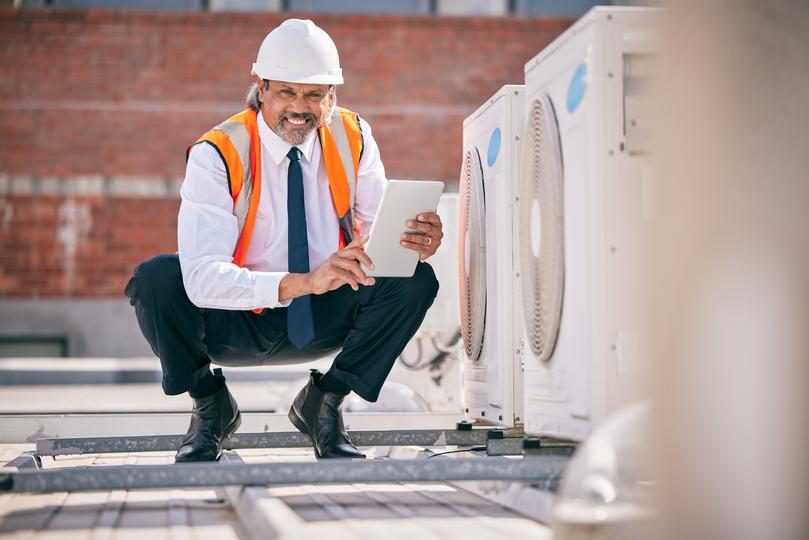
Find trusted HVAC companies near you. Get quotes for AC repair, furnace repair, HVAC installation, and maintenance services from the best local HVAC companies.

Get fast and reliable emergency HVAC services 24/7. We respond quickly to heating and cooling emergencies, ensuring your comfort is restored promptly.

Experienced commercial HVAC contractors for all your business needs. We handle installation, repair, and maintenance of {heating, ventilation, and air condition
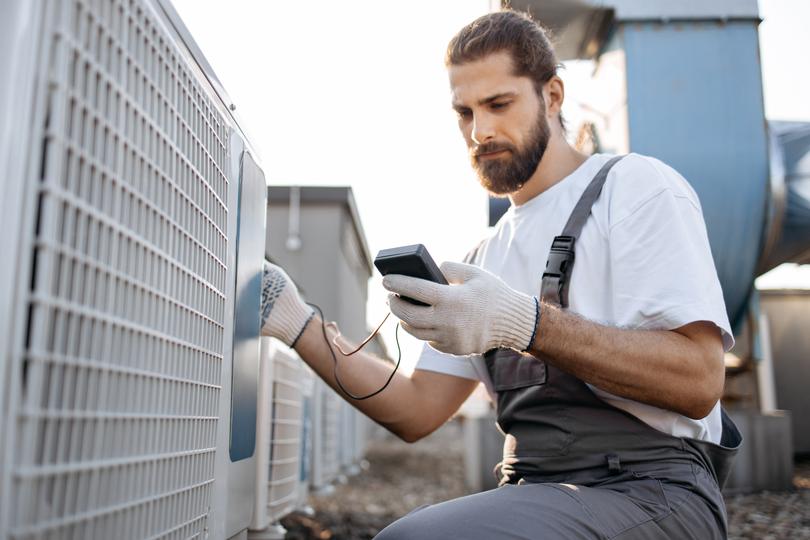
Upgrade to a new, energy-efficient air conditioner. We connect you with qualified HVAC technicians for seamless {AC replacement|air condi

Enjoy year-round comfort with a heat pump. Find qualified HVAC professionals for {expert heat pump installation|efficient and reliable heat pump serv
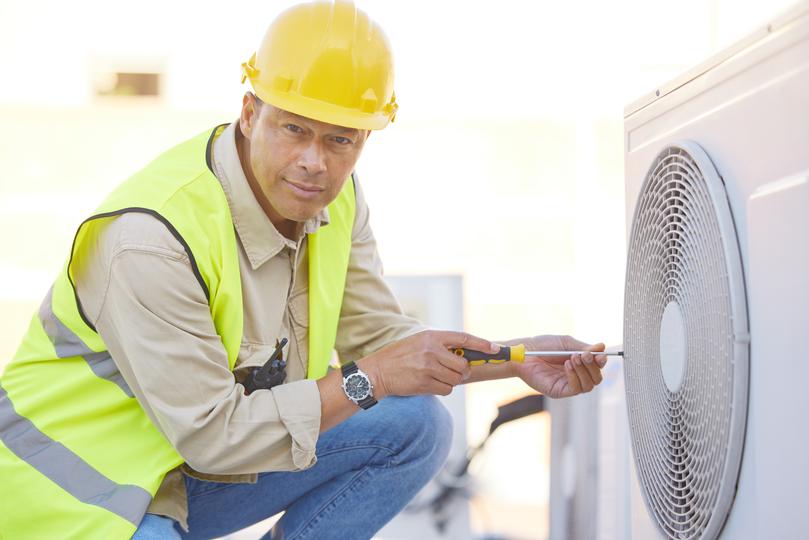
Keep your heat pump in top condition. Our network includes experienced HVAC technicians who specialize in heat pump maintenance.

Get your furnace fixed quickly and efficiently. We connect you with trusted HVAC professionals who specialize in {furnace repair|heating s

Upgrade to endless hot water and save on energy bills. Find expert plumbers for {tankless water heater installation|on-demand water heater

Need a new boiler for your business? Find reliable HVAC technicians for expert heating system replacement.

Expert tankless water heater repair services. We can diagnose and fix any issues with your on-deman

Improve your indoor air quality and HVAC efficiency. We connect you with reliable air duct cleaning services.
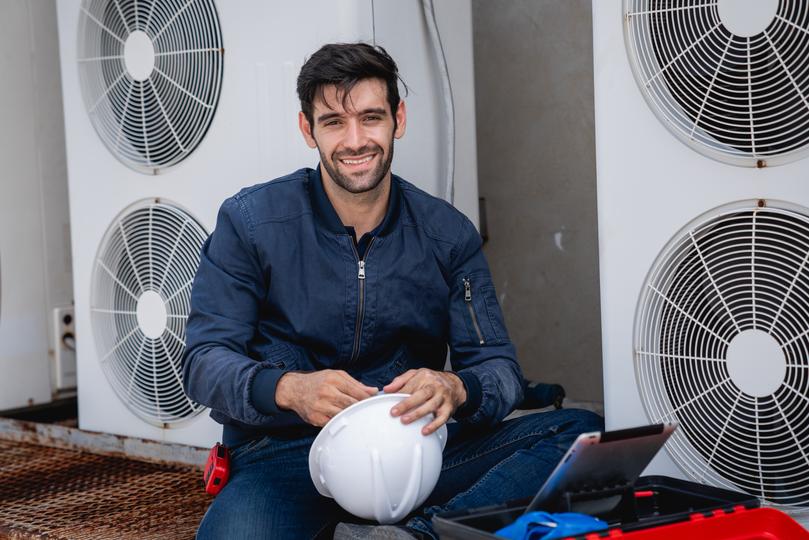
Expert boiler repair services for homes and businesses. We can {connect you with qualified HVAC technicians|help you fin
Fast and Reliable Sump Pump Repair for Your Home
Residential Sump Pump Repair
HVACCompaniesHub.com connects homeowners with reliable residential sump pump repair technicians near you . Get your sump pump fixed quickly and efficiently to protect your home from flooding and water damage. Our network of professionals provides fast response times, upfront pricing, and guaranteed workmanship.

Find trusted HVAC companies near you. Get quotes for AC repair, furnace repair, HVAC installation, and maintenance services from the best local HVAC companies.

Get fast and reliable emergency HVAC services 24/7. We respond quickly to heating and cooling emergencies, ensuring your comfort is restored promptly.

Upgrade to a new, energy-efficient air conditioner. We connect you with qualified HVAC technicians for seamless {AC replacement|air condi

Enjoy year-round comfort with a heat pump. Find certified HVAC professionals for {expert heat pump installation|efficient and reliable heat pump serv

Keep your heat pump in top condition. Our network includes qualified HVAC technicians who specialize in heat pump repair.

Get your furnace fixed quickly and efficiently. We connect you with reliable HVAC professionals who specialize in {furnace repair|heating s

Upgrade to endless hot water and save on energy bills. Find qualified plumbers for {tankless water heater installation|on-demand water heater

Need a new boiler for your business? Find reliable HVAC technicians for expert boiler installation.

Protect your basement from flooding. Find qualified plumbers for expert sump pump installation services.

Expert tankless water heater repair services. We can troubleshoot and repair any issues with your on-deman

Expert sump pump repair and maintenance to keep your basement dry. We connect you with qualified HVAC technicians who specialize in sump pump {repair

Improve your indoor air quality and HVAC efficiency. We connect you with professional air duct cleaning companies.

Expert boiler repair services for residential and commercial properties. We can {connect you with qualified HVAC technicians|help you fin
Is Your Sump Pump Malfunctioning?
Find Trusted Sump Pump Repair Specialists on HVACCompaniesHub!
Get free quotes, compare services, and connect with licensed and experienced sump pump repair technicians in your area.
Sump Pump Repair Glossary
Sump Pump
Sump Basin
Submersible Sump Pump
Pedestal Sump Pump
Float Switch
Check Valve
Discharge Pipe
Impeller
Motor
Backup Sump Pump
Water Level Alarm
Sump Pump Discharge Line
Sump Pump Basin Lid
Sump Pump Maintenance
Sump Pump Replacement
Frequently Asked Questions About Sump Pump Repair
How much does it cost to repair a sump pump?
What are the most common sump pump problems?
- Clogged or jammed impeller: Clear any obstructions from the impeller.
- Stuck float switch: Check the float switch for proper operation.
- Faulty check valve: Inspect the check valve to make sure it's working correctly.
- Motor failure: The motor might need to be replaced if it fails.
- Power problems: A tripped circuit breaker, a loose connection, or a power outage can prevent the sump pump from running.
- Frozen or clogged discharge line: In cold weather, the discharge line can freeze, preventing water from flowing out of the pump.
- Switch issues: Check for proper switch operation
How do I know if my sump pump needs repair?
- Unusual noises: If you notice unusual sounds, have the pump inspected
- Constant running: If your sump pump runs continuously, even when there is no water in the pit, there may be a problem with the float switch or the check valve..
- Water in the sump pit: The water level should go down after the pump activates.
- Visible rust or corrosion: Rust and corrosion can indicate that the pump is wearing out and may need to be replaced.
- Burning smell: A burning smell coming from the sump pump could indicate a problem with the motor..
How do I find a qualified sump pump repair technician?
- Ask for referrals: Get referrals from people you trust.
- Check online reviews: Look for plumbers with positive reviews and high ratings on websites like Yelp, Google, and Angie's List. .
- Verify licensing and insurance: Make sure the plumber you hire is licensed and insured. Ask for proof of credentials
- Get multiple quotes: Compare pricing and services to make sure you're getting a fair price. This will give you a better understanding of the costs involved and help you make an informed decision. .
- Ask about experience: Find out how long the plumber has been in business and if they have experience repairing sump pumps. Ensure the technician has experience with your system type.
- Inquire about warranties: Ask about the warranty on the repair work..
- Check for availability: If you have a urgent issue, check their availability for prompt service.
- Look for professionalism: Choose a plumber who is punctual, courteous, and communicates effectively. .
How do I know if my sump pump is working?
- Listen: When the sump pump is running, you should be able to hear the motor humming. If you don't hear anything, check the power supply to the pump..
- Look: Check the sump pit to see if the water level is going down.. Inspect the discharge line for blockages or freezing.
- Test: A simple test helps confirm that the pump activates The pump should turn on automatically and pump the water out.. If it doesn't, there may be a problem with the pump, the float switch, or the power supply..
How often should I replace my sump pump?
How can I prevent my sump pump from failing?
- Schedule annual maintenance: Have a qualified plumber inspect and service your sump pump annually. This will help identify potential problems before they cause a breakdown. .
- Keep the sump pit clean: Remove any debris, such as leaves, sticks, or dirt, that could clog the pump or the float switch.
- Install a backup sump pump: A backup sump pump provides peace of mind in case of an emergency. Consider installing a backup for redundancy.
- Test your sump pump regularly: Perform periodic tests to confirm your sump pump is functional. Regular testing helps to identify problems early
- Check the discharge line: Confirm the discharge line is free of clogs and routed correctly. In cold weather, check the line to make sure it's not frozen. .
- Install a water alarm: Get early warning of potential issues with a water alarm.
- Consider a battery backup system: Battery backups ensure operation during power failures. This provides continuous protection.
What is a sump pump alarm?
- Water-activated alarms: These alarms have a sensor that is placed in the sump pit and will sound an alarm when it comes in contact with water. .
- Pressure-activated alarms: A change in pressure triggers the alarm.
- High-water alarms: These alarms are installed near the top of the sump pit and will sound when the water level reaches a certain point.
Why is my sump pump running but not pumping water?
- Clogged Discharge Line: Debris or ice can block the pipe and prevent water from being pumped out. Inspect the line for clogs and ensure proper drainage.
- Frozen Discharge Line: In cold weather, the discharge line can freeze, preventing the pump from removing water. . Thaw the pipe with a hairdryer or heat tape..
- Clogged Impeller: The impeller, which is the spinning part of the pump that moves the water, can become clogged with debris.. Inspect the impeller for any obstructions.
- Faulty Check Valve: A malfunctioning check valve can prevent the pump from creating enough suction to pump water.. Check valve failure is a common issue.
- Switch Problems: Inspect the pump's switches to make sure they are working. Switch issues can cause the pump to run inefficiently or not at all.
- Motor Issues: The pump motor may be burnt out or malfunctioning, preventing it from pumping water. . If you hear a humming sound but no water is moving, this could indicate a motor problem.
How do I test my sump pump?
- Listen for the motor: The pump should activate as the water level rises, and the motor should make a humming sound.
- Check the float switch: The float switch should rise and fall freely with the water level.
- Observe the discharge line: Water should be pumped out and directed away from the foundation.
- Monitor the water level: The water level in the sump pit should go down as the pump runs. . The pit should be clear of water once the pump cycles off.
What are the different types of sump pumps?
**Types of Sump Pumps:**
- Submersible Sump Pumps: As the name implies, submersible pumps operate underwater. They offer quiet and efficient operation.
- Pedestal Sump Pumps: Pedestal pumps have a motor that sits above the water on a pedestal, with a pipe extending down into the sump pit. . They are a more budget-friendly option, but they are not as discreet. They're also easier to service because the motor is accessible.
- Battery Backup Sump Pumps: These pumps are designed to provide backup power to your primary sump pump in the event of a power outage. They offer essential protection during storms and outages. Consider this type of pump if you live in an area prone to power outages or if you want extra peace of mind..
- Combination Sump Pumps: These are a combination of a primary sump pump and a backup sump pump. They offer the most reliable protection against flooding. The primary pump is usually a submersible pump, and the backup pump is typically battery-powered. .
- Water-Powered Backup Sump Pumps: Water-powered pumps utilize municipal water pressure to operate. They do not require electricity to run, so they will continue to operate during a power outage. However, they are not as powerful as electric sump pumps, and they can use a significant amount of water. .
What is a French drain?
How do I maintain my sump pump?
- Inspect the sump pit: Remove any debris, such as leaves, sticks, or dirt, that may have collected in the pit. .
- Check the float switch: Ensure it can activate the pump properly.
- Test the pump: Pour a bucket of water into the sump pit to test the pump. . The pump should turn on automatically and pump the water out of the pit.
- Check the discharge line: Inspect the line regularly. Also, check that the discharge point is directed away from your foundation.
- Clean the pump: Once a year, clean the pump by removing any debris from the intake screen. .
- Consider professional maintenance: Schedule an annual check with a plumber.
How does a sump pump work?
Can I add a battery backup to my existing sump pump?
What is a water-powered sump pump?
How do I choose the right sump pump for my home?
- The size of your basement or crawlspace: A larger space will require a more powerful pump.
- The amount of water that typically collects in the sump pit: If your basement or crawlspace is prone to flooding, you'll need a pump with a higher capacity. .
- The height that the water needs to be pumped: The pump must be able to lift the water to a discharge point that is higher than the sump pit.
- The type of foundation you have: Consider your foundation type for compatibility.
- Whether you need a backup sump pump: Backup pumps offer protection during emergencies.
- The type of switch you prefer: Sump pumps can be controlled by different types of switches. Each switch offers advantages and disadvantages.
Where does the water from my sump pump go?
- A storm drain: Direct connection to a storm drain system effectively removes wastewater.
- A dry well: A dry well is a pit filled with gravel that allows water to slowly seep into the ground. .
- A drainage ditch: Ditches divert water away.
- Your yard: Ensure that water is directed to a safe distance and doesn't cause damage or erosion.
What is a sump pump check valve?
How often should I clean my sump pump?
- The sump pump is making strange noises.
- The sump pump is running more often than usual.
- The sump pump is not pumping water as efficiently as it used to.
- You see visible debris in the sump pit.
Do I need a sump pump if I have a French drain?
faq.question22
- Battery backup sump pumps: Battery backups automatically activate if the power to your home goes out. They can pump water for several hours, even if there is no power..
- Water-powered backup sump pumps: They connect to your water supply and don't require electricity to operate. They're a good option for those concerned about power outages but have access to reliable water pressure.
What should I do if my sump pump is making a loud noise?
- Debris in the impeller: Turn off the power to the pump and carefully remove any debris from the impeller.
- Worn bearings: The bearings in the motor may need to be replaced if they're causing excessive noise.
- Loose impeller: Tighten the impeller to resolve this.
- Airlock in the pump: An airlock can occur when air gets trapped in the pump, causing it to make a gurgling noise. .
What is the best sump pump brand?
- Zoeller: Known for high-quality sump pumps and long warranties. They are a trusted name in the industry.
- Liberty Pumps: Liberty Pumps is another reputable brand that offers a wide variety of sump pumps, including battery backup and combination pumps. .
- Wayne: Wayne is a well-known brand that offers a good balance of price and performance. .
- Sump Pumps Direct: Sump Pumps Direct is a direct-to-consumer brand that offers a wide range of sump pumps at competitive prices. .
- Flotec: Flotec offers a range of pumps for various water management needs, including sump pumps, at affordable prices..
- Warranty: Look for a pump with a good warranty , covering both parts and labor..
- Horsepower: Choose a pump with enough horsepower to handle the amount of water that typically collects in your sump pit..
- Features: Choose features that enhance your protection and convenience
- Price: Sump pumps can range in price from a few hundred dollars to over a thousand pounds. Set a budget before shopping.
How much does it cost to repair a sump pump?
What are the most common sump pump problems?
- Clogged or jammed impeller: Debris, such as dirt, gravel, or small objects, can get stuck in the impeller, preventing it from spinning properly. .
- Stuck float switch: Check the float switch for proper operation.
- Faulty check valve: A malfunctioning check valve can allow water to flow back into the sump pit, causing the pump to cycle on and off too frequently.
- Motor failure: The motor might need to be replaced if it fails.
- Power problems: Make sure the pump is receiving power.
- Frozen or clogged discharge line: The line can also become clogged with debris.
- Switch issues: A faulty pressure switch or float switch can result in the pump not activating or running constantly.
How do I know if my sump pump needs repair?
- Unusual noises: Strange noises coming from your sump pump, such as grinding, rattling, or humming, could indicate a problem.
- Constant running: This could be a sign of a serious issue that needs immediate attention.
- Water in the sump pit: The water level should go down after the pump activates.
- Visible rust or corrosion: Rust and corrosion can indicate that the pump is wearing out and may need to be replaced.
- Burning smell: A burning smell coming from the sump pump could indicate a problem with the motor..
How do I find a qualified sump pump repair technician?
- Ask for referrals: Get referrals from people you trust.
- Check online reviews: See what previous customers are saying about their experience.
- Verify licensing and insurance: Make sure the plumber you hire is licensed and insured. Ask for proof of credentials
- Get multiple quotes: Compare pricing and services to make sure you're getting a fair price. This will give you a better understanding of the costs involved and help you make an informed decision. .
- Ask about experience: Find out how long the plumber has been in business and if they have experience repairing sump pumps. Ensure the technician has experience with your system type.
- Inquire about warranties: Make sure you have a clear understanding of the warranty terms.
- Check for availability: If you have a urgent issue, check their availability for prompt service.
- Look for professionalism: Choose a plumber who is punctual, courteous, and communicates effectively. .
How do I know if my sump pump is working?
- Listen: When the sump pump is running, you should be able to hear the motor humming. Ensure it's receiving electricity.
- Look: Check the sump pit to see if the water level is going down.. Inspect the discharge line for blockages or freezing.
- Test: A simple test helps confirm that the pump activates The pump should activate as the float rises. Address any issues you observe.
How often should I replace my sump pump?
How can I prevent my sump pump from failing?
- Schedule annual maintenance: Have a qualified plumber inspect and service your sump pump once a year. . Regular maintenance helps catch problems early.
- Keep the sump pit clean: Ensure the sump pit is free of debris that could restrict the pump or float switch.
- Install a backup sump pump: A backup sump pump will provide extra protection in case your primary sump pump fails or the power goes out. . Battery-powered backup pumps are a popular choice. .
- Test your sump pump regularly: Perform periodic tests to confirm your sump pump is functional. Do this at least once a season, especially during the rainy season.
- Check the discharge line: Make sure the discharge line is clear of obstructions and that it is directed away from your foundation.. In cold weather, check the line to make sure it's not frozen. .
- Install a water alarm: A water alarm will sound if the water level in the sump pit rises too high, alerting you to a potential problem. .
- Consider a battery backup system: Battery backups ensure operation during power failures. This provides continuous protection.
What is a sump pump alarm?
- Water-activated alarms: They activate when water touches the sensor.
- Pressure-activated alarms: A change in pressure triggers the alarm.
- High-water alarms: A float-activated switch triggers the alarm at a preset water level.
Why is my sump pump running but not pumping water?
- Clogged Discharge Line: The most common reason is a clogged discharge line. . Inspect the line for clogs and ensure proper drainage.
- Frozen Discharge Line: In cold weather, the discharge line can freeze, preventing the pump from removing water. . Thaw the pipe with a hairdryer or heat tape..
- Clogged Impeller: The impeller is responsible for drawing water into the pump. Inspect the impeller for any obstructions.
- Faulty Check Valve: A malfunctioning check valve can prevent the pump from creating enough suction to pump water.. Replace the check valve if necessary.
- Switch Problems: If the float switch is stuck or the pressure switch is faulty, the pump may not activate properly. . Replace the switch if it's malfunctioning.
- Motor Issues: The pump motor might need replacement. A faulty motor might not be able to drive the pump.
How do I test my sump pump?
- Listen for the motor: The pump should turn on automatically and you should hear the motor running.
- Check the float switch: The float switch should rise and fall freely with the water level.
- Observe the discharge line: Water should be pumped out and directed away from the foundation.
- Monitor the water level: The water level in the sump pit should go down as the pump runs. . The pit should be clear of water once the pump cycles off.
What are the different types of sump pumps?
**Types of Sump Pumps:**
- Submersible Sump Pumps: These pumps are designed to be completely submerged in water and are typically located in the sump pit.. They offer quiet and efficient operation.
- Pedestal Sump Pumps: Pedestal pumps have a motor that sits above the water on a pedestal, with a pipe extending down into the sump pit. . They are typically less expensive than submersible pumps, but they are also noisier and less powerful. . They're also easier to service because the motor is accessible.
- Battery Backup Sump Pumps: These pumps are designed to provide backup power to your primary sump pump in the event of a power outage. They offer essential protection during storms and outages. Consider this type of pump if you live in an area prone to power outages or if you want extra peace of mind..
- Combination Sump Pumps: Combining the benefits of a main pump and a backup They're the most robust solution for basement waterproofing. The primary pump is usually a submersible pump, and the backup pump is typically battery-powered. .
- Water-Powered Backup Sump Pumps: These are another backup option. . They do not require electricity to run, so they will continue to operate during a power outage. However, they are not as powerful as electric sump pumps, and they can use a significant amount of water. .
What is a French drain?
How do I maintain my sump pump?
- Inspect the sump pit: Keep the pit free of obstructions.
- Check the float switch: Make sure the float switch is moving freely and is not obstructed. .
- Test the pump: Pour a bucket of water into the sump pit to test the pump. . The pump should turn on automatically and pump the water out of the pit.
- Check the discharge line: Inspect the line regularly. Also, check that the discharge point is directed away from your foundation.
- Clean the pump: Refer to your manufacturer's instructions for specific cleaning instructions.
- Consider professional maintenance: It's a good idea to have a qualified plumber inspect and service your sump pump every year, especially if you live in an area with frequent power outages or heavy rainfall.
How does a sump pump work?
Can I add a battery backup to my existing sump pump?
What is a water-powered sump pump?
How do I choose the right sump pump for my home?
- The size of your basement or crawlspace: Bigger basements need larger, more powerful pumps.
- The amount of water that typically collects in the sump pit: If your basement or crawlspace is prone to flooding, you'll need a pump with a higher capacity. .
- The height that the water needs to be pumped: The pump must be able to lift the water to a discharge point that is higher than the sump pit.
- The type of foundation you have: Different types of foundations may require different types of sump pumps..
- Whether you need a backup sump pump: A backup sump pump is recommended for homes that are prone to power outages or have a high risk of flooding. .
- The type of switch you prefer: Sump pumps can be controlled by different types of switches. Each switch offers advantages and disadvantages.
Where does the water from my sump pump go?
- A storm drain: Direct connection to a storm drain system effectively removes wastewater.
- A dry well: A dry well is a pit filled with gravel that allows water to slowly seep into the ground. .
- A drainage ditch: The discharge line can be directed to a drainage ditch or swale, as long as it is located a safe distance from your home. .
- Your yard: In some cases, the discharge line can be directed to your yard, but it's important to make sure that the water is directed away from your foundation and that it does not create any pooling or erosion problems.
What is a sump pump check valve?
How often should I clean my sump pump?
- The sump pump is making strange noises.
- The sump pump is running more often than usual.
- The sump pump is not pumping water as efficiently as it used to.
- You see visible debris in the sump pit.
Do I need a sump pump if I have a French drain?
faq.question22
- Battery backup sump pumps: Battery backups automatically activate if the power to your home goes out. They can pump water for several hours, even if there is no power..
- Water-powered backup sump pumps: They connect to your water supply and don't require electricity to operate. They do not need electricity or batteries to operate but require sufficient water pressure.
What should I do if my sump pump is making a loud noise?
- Debris in the impeller: Debris, such as rocks, sticks, or other objects, can get caught in the impeller and cause it to make a grinding noise. .
- Worn bearings: The bearings in the motor may need to be replaced if they're causing excessive noise.
- Loose impeller: Tighten the impeller to resolve this.
- Airlock in the pump: This problem can often be solved by bleeding the pump, which is a process of releasing the trapped air.
What is the best sump pump brand?
- Zoeller: Known for their durability and reliability, Zoeller is a popular choice among plumbers. . They are a trusted name in the industry.
- Liberty Pumps: Liberty Pumps is another reputable brand that offers a wide variety of sump pumps, including battery backup and combination pumps. .
- Wayne: Their sump pumps are reliable and affordable.
- Sump Pumps Direct: Sump Pumps Direct is a direct-to-consumer brand is known for their value and customer service.
- Flotec: Their sump pumps are designed for both residential and commercial applications.
- Warranty: Look for a pump with a good warranty , ensuring coverage for defects.
- Horsepower: Choose a pump with enough horsepower to handle the amount of water that typically collects in your sump pit..
- Features: Consider features such as a built-in alarm, automatic switch, or a backup power supply.
- Price: Sump pumps can vary in cost from a few hundred dollars to over a thousand dollars. Choose a pump that fits your budget..